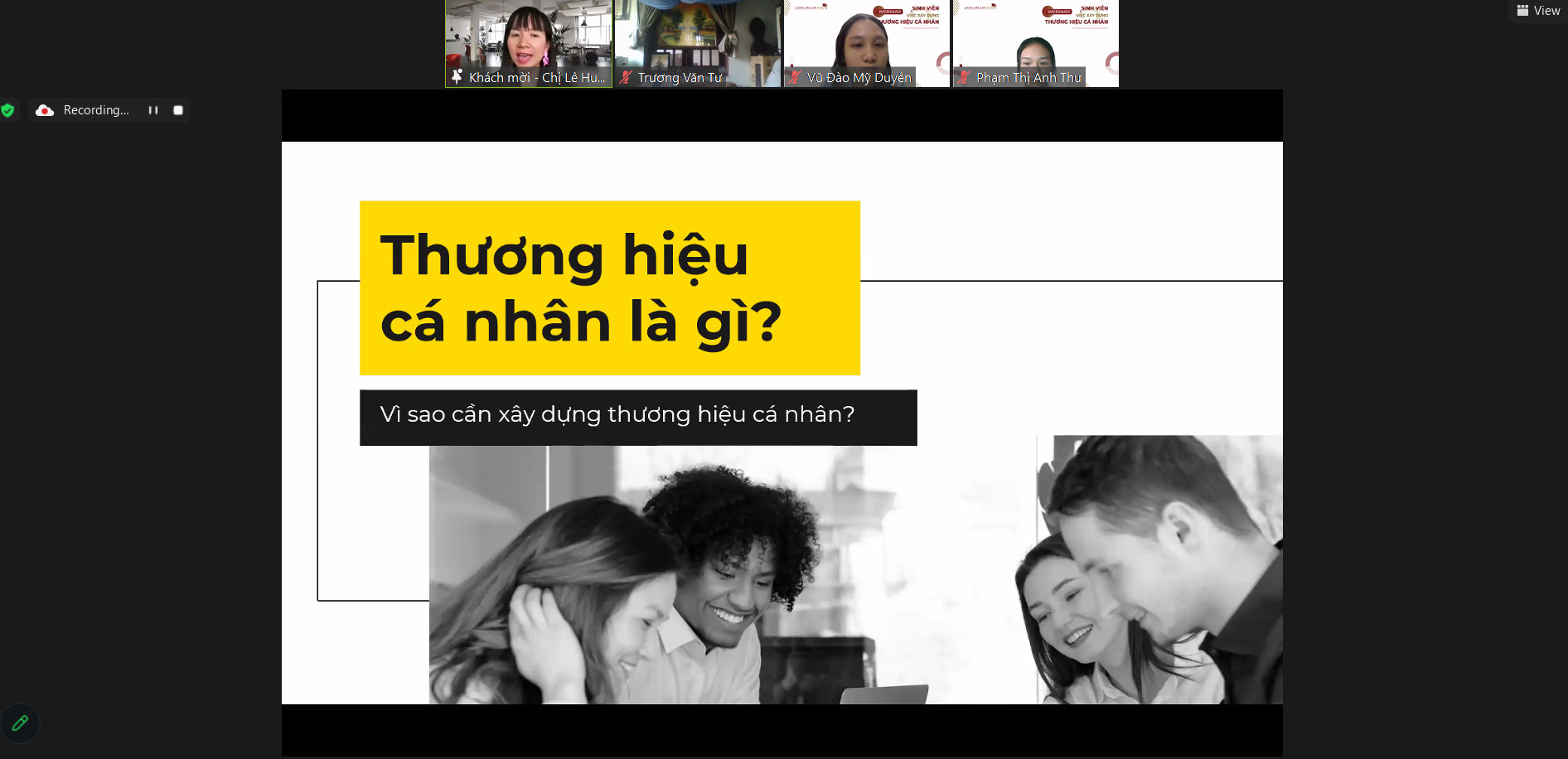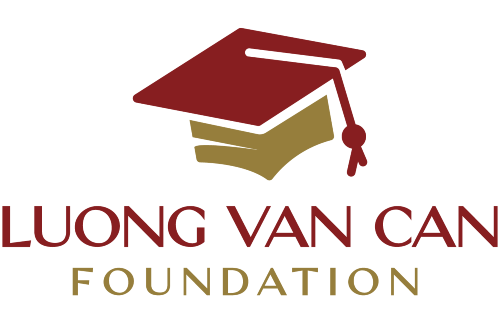Luong Van Can Fund organized webinar program “Students and Building Personal Branding”
On Saturday afternoon, March 23, 2024, Luong Van Can Fund hosted a webinar titled “Students and Building Personal Branding” as part of the Mock Interview program. The speaker for this webinar was Ms. Le Huynh Hai Sa, with 100 students participating, all eager to learn about personal branding. The program aimed to provide practical insights and offer a fresh perspective on professional personal branding for students.
At the beginning of the session, Ms. Hai Sa provided a comprehensive overview of personal branding through five key elements: Timing – Environment – Communication – Attire – Profession. According to her, personal branding plays a crucial role in life, helping individuals understand themselves and shape not only a positive public image but also meaningful relationships. In terms of career development, a strong personal brand helps individuals leave a distinctive mark, enhance their credibility, expand their network, and create better career opportunities.
Three Levels of Personal Branding
Ms. Hai Sa clearly outlined the three levels of personal branding:
- Being known
- Being remembered
- Being followed
She emphasized that “brand” is your identity—the factor that makes you stand out from others. To build a strong personal brand, students should follow six essential steps, beginning with self-assessment.
At this stage, individuals should take the time to evaluate their strengths and weaknesses, supported by personality tests such as MBTI or Big Five, as well as feedback from peers, mentors, and colleagues. Additionally, activity logs and social interactions can provide valuable insights. Ms. Hai Sa highlighted that success or failure largely depends on how we learn from others. Therefore, students should actively engage with teams, online communities, and social groups. She also recommended that students take advantage of the mentoring relationships available within the Fund’s Mentorship Program.

The second step involves identifying short-term and long-term goals, specifically those aligned with career aspirations and personal development. Before setting goals, individuals should analyze and prioritize their objectives based on five key categories:
- Important goals
- Urgent goals
- Goals that are both important and urgent
- Less urgent goals
- Goals that require adjustments
By organizing goals effectively, individuals can define their core values and priorities in both life and career.
In the third step, students must analyze and assess their working and social environment. Initially, individuals need to gather relevant information before moving on to evaluate and strategize their approach. Understanding the strengths and weaknesses of the surrounding environment allows individuals to navigate it more effectively.
Ms. Hai Sa also stressed the importance of actively seeking feedback and engaging in meaningful communication. Expanding personal networks and creating mutual value in relationships is essential for long-term professional success.
Building a Personal Brand and Image
After completing the foundational steps, Ms. Hai Sa introduced the most crucial step—Building the Personal Brand. She emphasized that a strong personal brand is a combination of:
- Unique personal strengths
- Self-defined values
- A clear personal message
This personal message is not meant for self-promotion, but rather to help individuals recognize, refine, and align their values. Once this is established, individuals will no longer feel uncertain or hesitant when asked to introduce themselves.
In step five—Building a Professional Image, Ms. Hai Sa shared her perspective on the importance of appearance and personal presentation alongside internal growth. Clothing style, communication skills, and confidence all contribute significantly to one’s public image.
She suggested using social media platforms such as LinkedIn, Facebook, and Instagram to enhance visibility. However, to effectively build an online presence, individuals must create consistent, authentic content that accurately reflects their values and career aspirations. She also noted that maintaining a strong personal brand requires active engagement—building meaningful relationships by giving value rather than just receiving it.
Good relationships, she emphasized, can enhance one’s personal brand and open doors to new opportunities.
Evaluating and Adjusting Personal Branding
Finally, Ms. Hai Sa highlighted the importance of continuous evaluation and adjustment. She suggested various ways to gather feedback, such as:
- Directly asking family, friends, and colleagues
- Observing interactions and reactions of others
- Self-assessing progress by comparing achievements to set goals
From these insights, individuals can make necessary adjustments. She also emphasized that evaluation should be done regularly, especially when making changes to:
- Communication style
- Social media profiles
- Career goals and strategies
Following the sharing session, Ms. Hai Sa answered students’ questions, providing additional insights to optimize their personal brand-building process. The lively discussion enriched students’ understanding of relationship-building and self-presentation strategies.

The Luong Van Can Fund sincerely appreciates Ms. Le Huynh Hai Sa for her valuable contributions and enthusiastic sharing. Through this workshop, students gained practical knowledge and experience, enabling them to develop a strong personal brand and professional image from their university years.
Source: The LVCF Media Team




